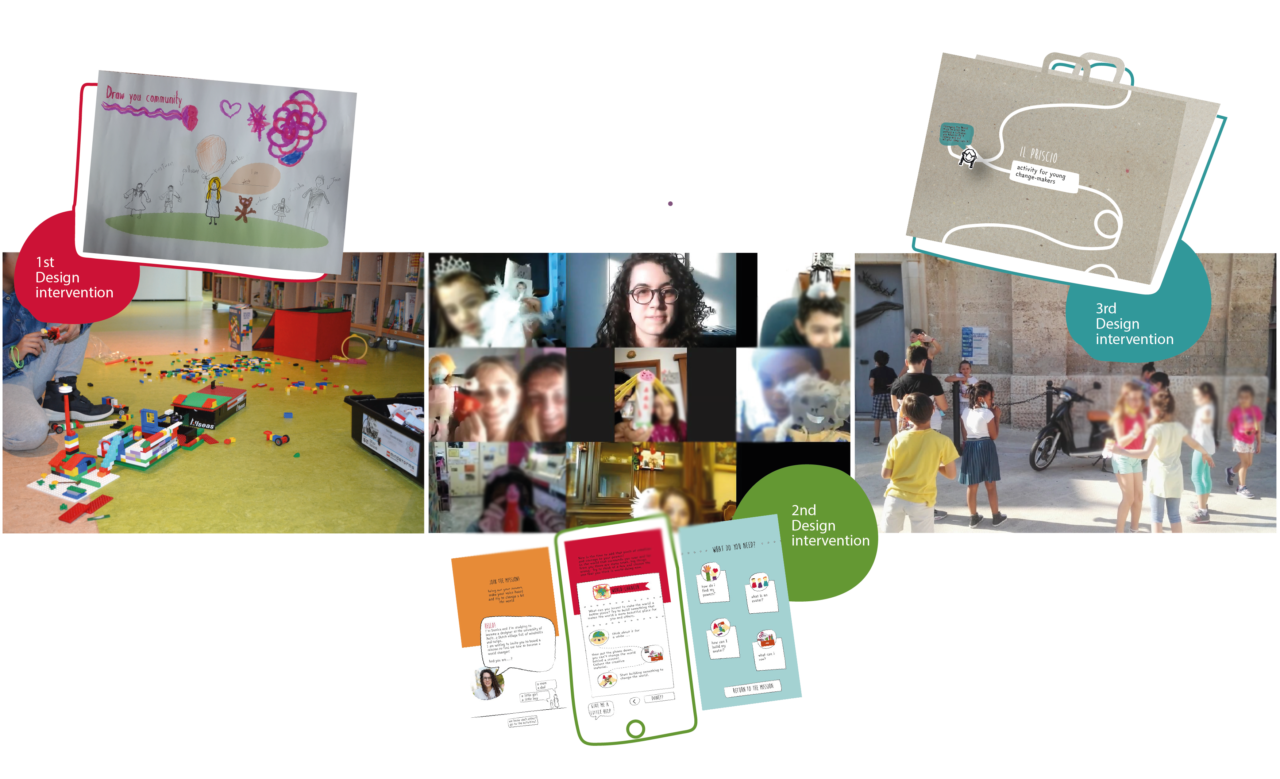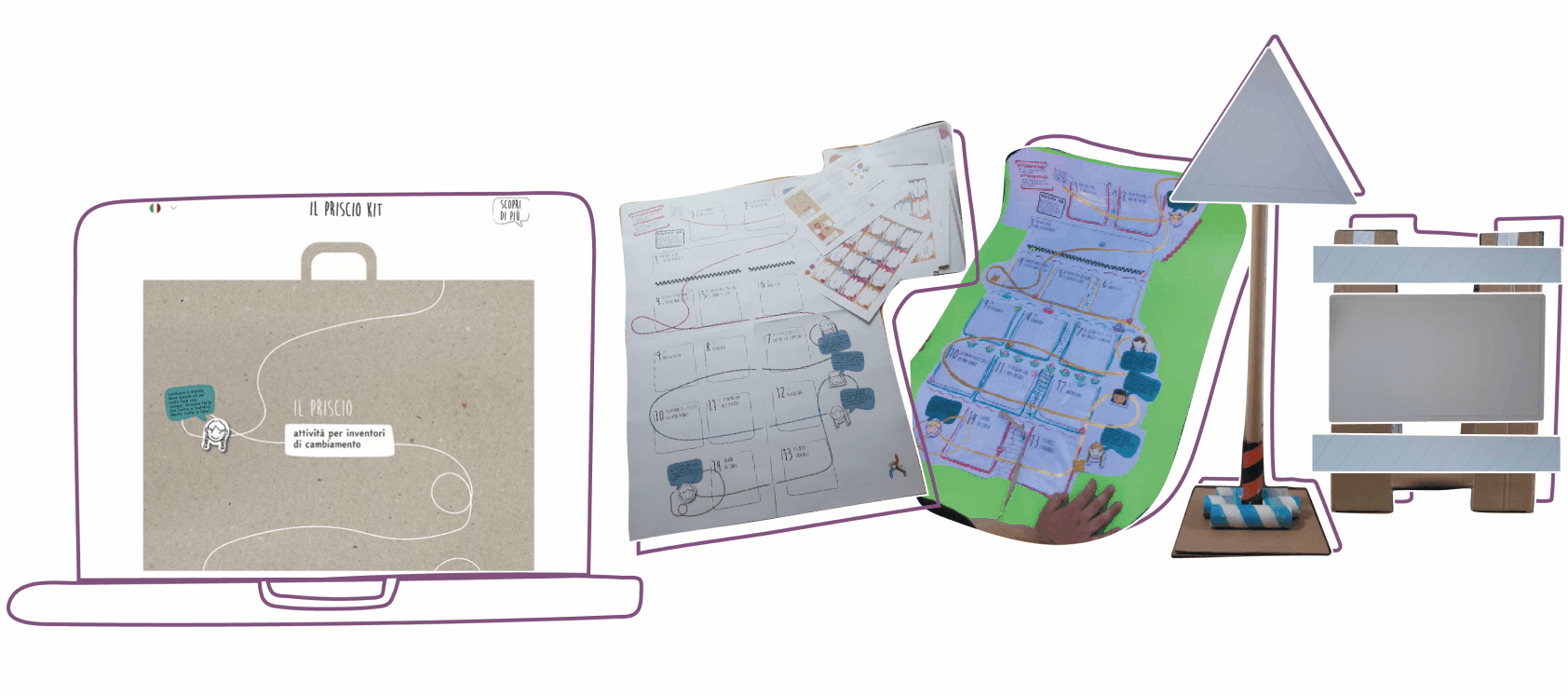Exploring arenas for children bottom-up participation in society
Participatory Design practices look like promising ways to let most vulnerable groups of citizens have a say in society. Take children for example. Their inherent creative skills and abilities in deconstructing experiences could bring innovative contributions to many problems society is facing. At the same time, their active participation in urban projects could unleash their talent and set the ground for their long-lasting civic engagement.
However children are currently excluded from formal structures of participation in democracy and the few arenas for their active citizenship are established top-down with an adult-driven agenda and characterized by power imbalances between children and adults.
Looking at the rise of practice-based innovation platforms in cities as promising opportunities for children involvement, Samira asked herself many times “how could children enter the collective sphere of urban activism?”
Recognizing the urgency to define genuine arenas for children to have a say in society, Samira focused her graduation project on exploring how children can participate in society without a top-down involvement and how they can be supported in the process of empowerment as active agents in their social and urban community.
Carried out at the intersection of the practices of Participatory City Making Lab and Play Well Lab, the project was a collaboration with the children centre of Reti Civiche Urbane (Urban Civic networks),a social innovation project of the Municipality of Bari (Italy), aimed at creating networks of local entities to promote urban and human regeneration in the fragile neighbourhoods of the city.

From existing strategies for empowerment to unlocking child-led dimensions for children activation
After a neighbourhood walk and a coffee with Reti Civiche Urbane’s front runners to kick start the collaboration, Samira combined a contextually grounded research approach with a case study analysis of design tools for children empowerment. From this latter she identified a series of recurrent empowering strategies to use as reference pillars for shaping the new method later on. However, she also noticed that most of the design tools for children replicate the same design activities typically proposed for adults. Moreover, they don’t address children directly and instead require decision making on project process and goal, which are delegated to adults.
Triggered by those considerations, Samira decided to address the project goal by emphasizing a child-led dimension of the children activation process.
She took a Research through Design (RtD) approach and planned three interventions with children to gradually disclose different degrees of open endedness and autonomy in the empowering process and activities. The activities were proposed to children in a dedicated laboratory and series of events within the children centre afternoon practice, “Cambia-mondo Lab”. Children weren’t simple participants, they were rather given the role of initiators with decision making power over the interpretation of tasks and the goal of their initiative. Moreover, they acted as co-researchers by reflecting and giving feedback on their creative process experiences.

The toolkit for young change-makers
Informed by those insights and the iterations of the design interventions, Samira could propose an initial version of a journey for children activation in their community, based on a child-led approach. To be aligned with the overall child-led empowerment intention and be usable by children the process was embodied in a toolkit, Il Priscio | The toolkit for young change-makers. It consists of a multi-format set of open-ended activities and supporting materials that enable children to go through the 5 phases of a children activation journey:
- raising “I can” mindset, through reciprocal identification and materialization of children’s abilities;
- finding relevance in opportunities for change through an illustrated peer to peer playful debate;
- becoming protagonists of opportunities through contextualization, exploration and mapping;
- powers-driven ideation and fabrication;
- training courage through building platforms for the public performance of ideas and solutions.

The child-led dimension of the activation journey proposed by Samira lies in multiple factors: from the affinity of the phases with children’s intuitive creative process and needs, to the open endedness of activities, enhancing children to express decision making power over challenges and solution space.
If you are curious and want to know more about the tool and the project don’t hesitate to check the full report or Samira’s graduation presentation.
First promising child-led reactions
After delivering the toolkit to the children centre, children and educators used it in a series of events in the main square of the neighbourhood. As a result, children requested to meet the local policymakers to present them their ideas and ask for recognition for their action. Even though the project and the tool initiated a chain reaction of positive impact, Samira is aware that they represented only a first experiment towards the creation of environments for child-led activation and children’s empowerment as active agents in their local community. This makes Samira hopeful that her work can contribute to inspire other designers to reverse power dynamics and play with ambiguity, to let children as well as other vulnerable citizens in society, participate in designing for positive change.
